Hello, and welcome to my article on the 10 types of hawks that you can find in British Columbia, Canada.
As a nature enthusiast, I have always been fascinated by these magnificent birds of prey and their hunting skills.
In this article, I will introduce you to the different types of hawks that call BC their home, including their physical characteristics, behavior, and habitat.
Whether you are a birdwatcher or just curious about the wildlife in BC, I hope this article will be informative and enjoyable for you.
Let’s dive in!
| Image | Name |
|---|---|
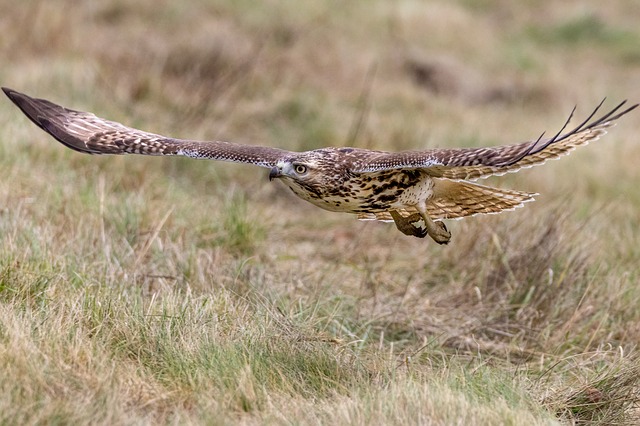 | Red-tailed Hawk |
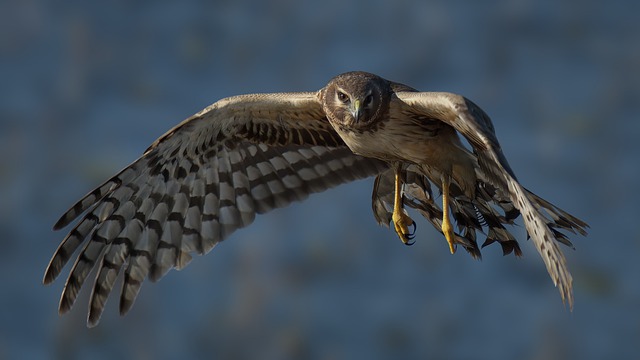 | Northern Harrier |
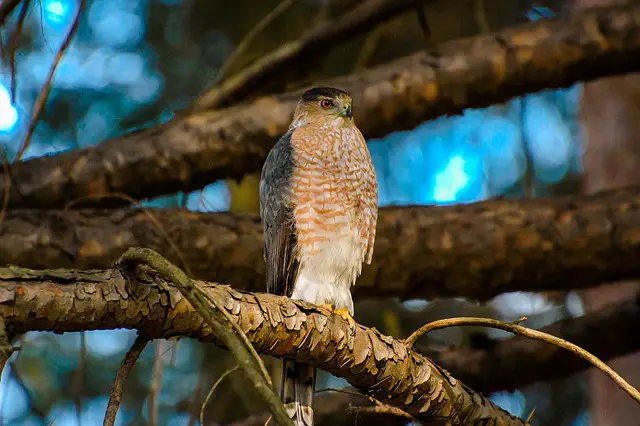 | Cooper's Hawk |
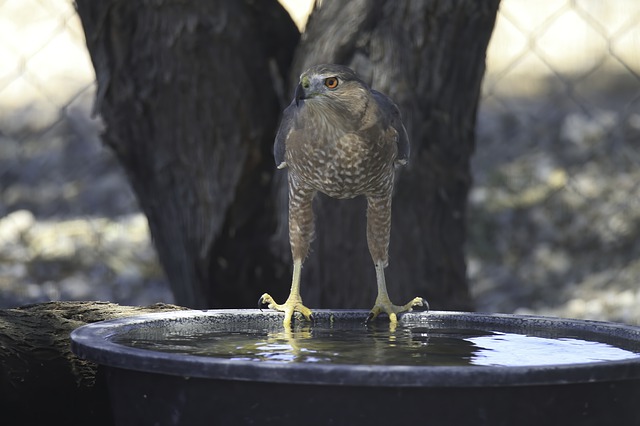 | Sharp-shinned Hawk |
 | Sharp-tailed Hawk |
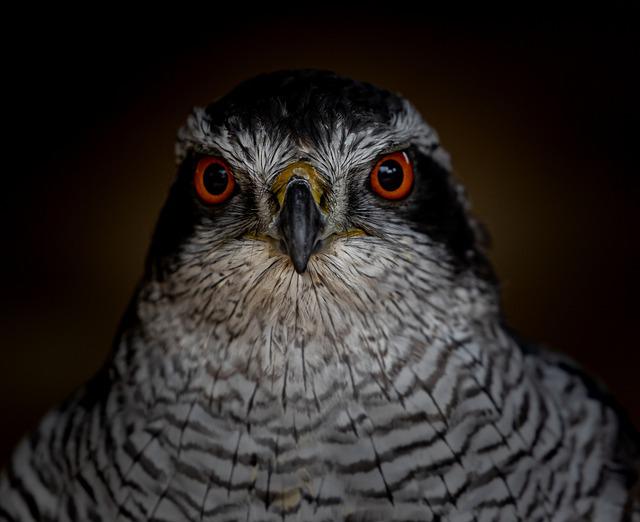 | Northern Goshawk |
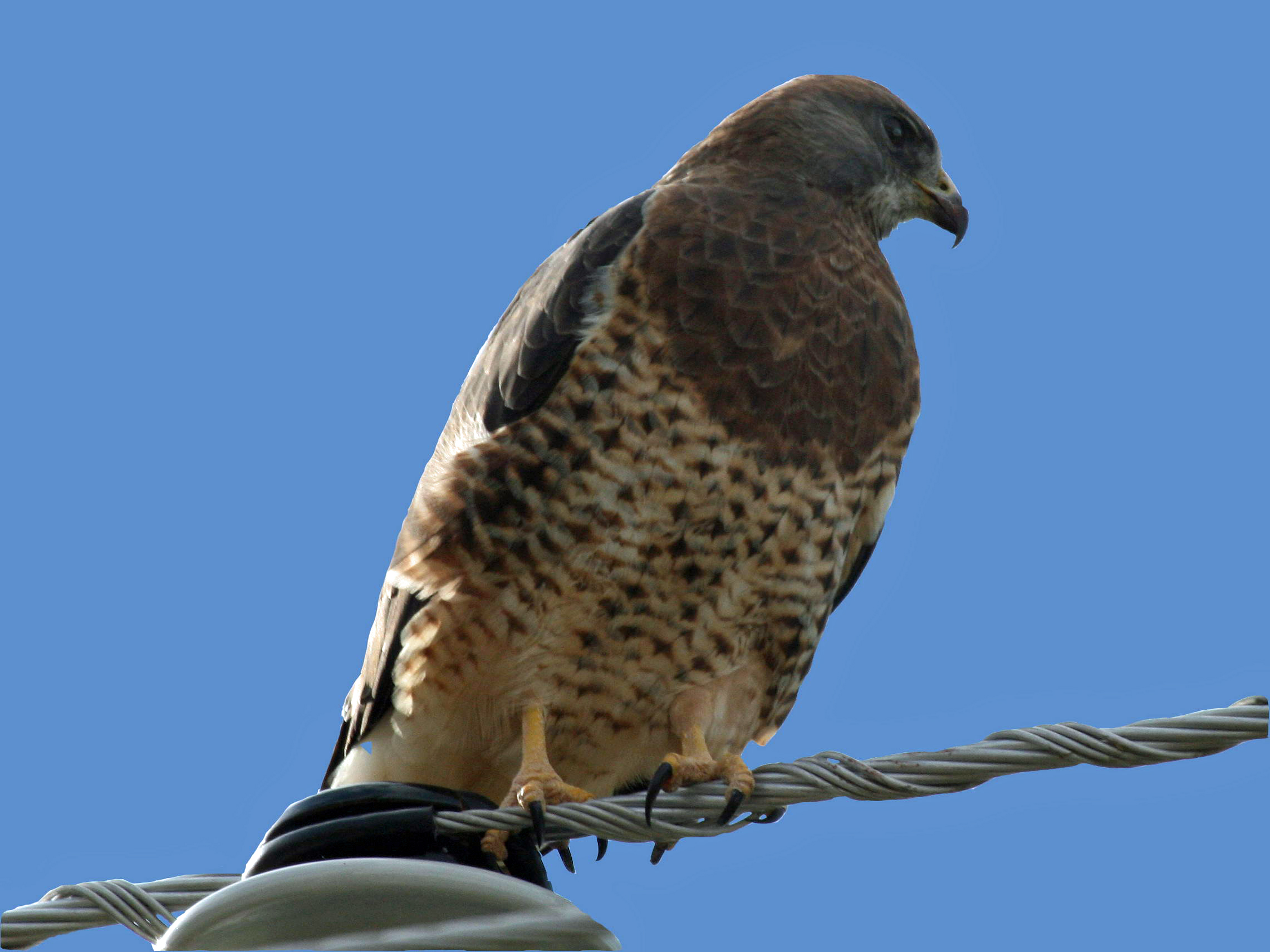 | Swainson’s Hawk |
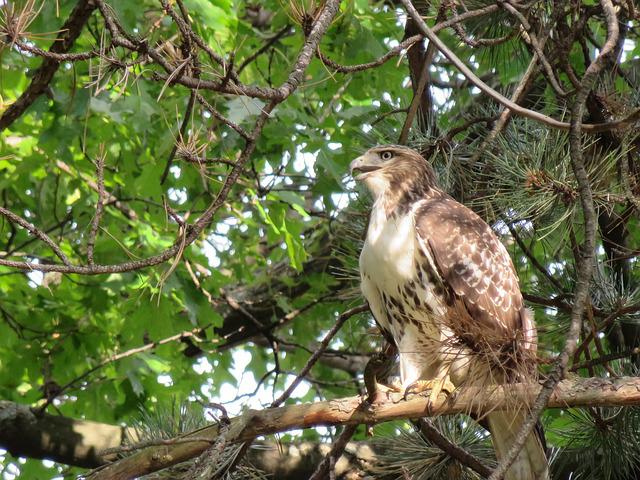 | Broad-winged Hawk |
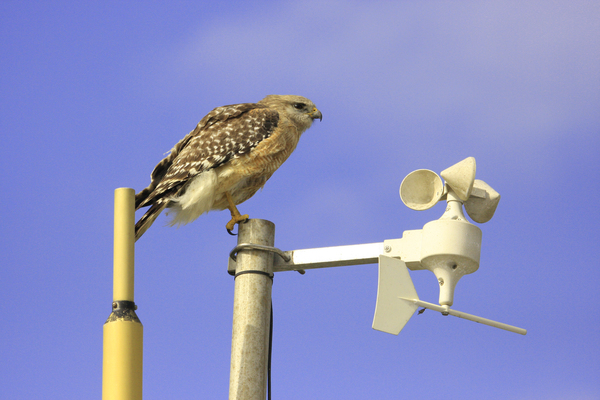 | Red-shouldered Hawk |
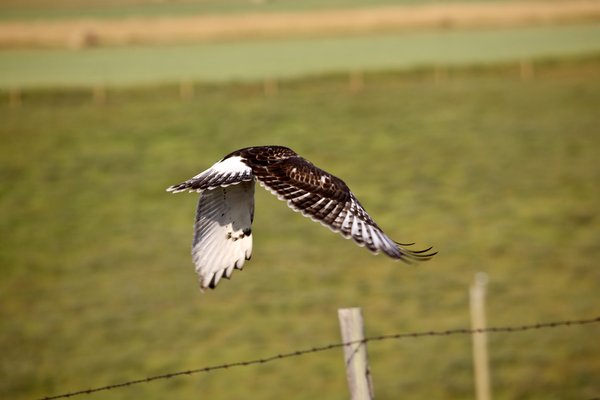 | Ferruginous Hawk |
Types of Hawks in British Columbia (BC)
1. Red-tailed Hawk

The red-tailed hawk is among the most often seen hawk throughout British Columbia.
Red-tailed hawks leave much of British Columbia for warmer climes in the wintertime, however, they may be spotted often in the southern region of the province, particularly in the Kamloops and Vancouver areas.
They have huge bodies and large, rounded wings. Red-tailed hawks often have a brown upper body and a white underside.
They are also among the most noticeable since they hunt birds, reptiles, and other small creatures while orbiting slowly over large regions while traveling in cars for extended periods of time.
They’re so common that you can even see them on utility poles.
In movies, raptors are usually represented by the high-pitched, raspy, falling screech of the Red-tailed Hawk.
The Red-tailed Hawk is a resident of the United States and Mexico all year long.
However, during the winter months, it travels southward from Canada, Alaska, and the Great Plains.
In Mexico, it is known as the Collared Hawk.
A bird’s nest is usually located in a high and out-of-the-way place, such as a tree, a cliff, or even a tower.
They hatch whitish eggs having brown spots.
2. Northern Harrier

The Northern Harrier is the province of British Columbia’s second-most-common hawk sighting.
Although Northern Harriers abandon most of British Columbia for the wintertime, they may still be seen often in the province’s southern regions, particularly around the cities of Vancouver and Kelowna.
Northern Harriers span the sizes of a crow and a goose, and they have wide, long wings.
When in flight, their wings typically form a v shape, with the apex rising above their bodies.
Males are grayish on top while white on the bottom, having a white spot on their nape, while females are brown.
Breeding throughout Canada, Alaska, the Northeast, and the northern Great Plains, Northern Harriers spend their winter months in Central America, the southern United States, and Mexico.
In the center, you’ll find those that stick throughout the year.
Flying low over meadows or marshes, you could see this slender, long-tailed hawk.
Birds and tiny animals comprise most of their diet.
They construct their nests on the ground, usually between reeds, willows, or brushtails.
They produce a clutch of 3 to 5 insignificant white eggs.
3. Cooper’s Hawk

The Cooper’s Hawk is the province of British Columbia’s third most frequently seen hawk.
Cooper’s Hawks leave most of the state for warmer climes in the wintertime, although they may still be seen in large numbers in the southeast of the state, particularly in the Kelowna and Vancouver areas.
The Cooper’s Hawk is approximately the size of a crow, but it looks nearly the same as the Sharp-shinned Hawk.
Because they all possess the same dark-banded tail, blueish-gray back, and red-orange chest, it might be difficult to tell them apart.
Compared to the Sharp-shinned Hawk, which has a relatively small head in relation to its enormous wings, these birds’ heads are much bigger.
Some Cooper’s Hawks migrate south to Honduras and Mexico for the winter season from their northern habitats, including Canada.
Nesting in high trees, they usually build their nests on top of abandoned large-bird nests or clumps of mistletoe, on which they feed moderate birds and tiny animals.
They lay about 3 to 7 eggs that are a bluish-white color.
4. Sharp-shinned Hawk

The mating season for the migrating Sharp-shinned Hawk occurs in British Columbia.
Some, meanwhile, stay in the province year-round, and they may be found in the coastal west.
The adult Sharp-shinned Hawk is a tiny hawk having a bluish-gray back and a rusty orange chest.
Their tails possess black stripes.
Females are around a third bigger than males.
Their tall, square tails are in sharp contrast to their curved, short wings and little heads.
Sharp-shinned Hawks move south from their breeding areas in Canada and the United States.
Those birds might spend the whole year in the Western and Appalachian Mountains.
The Sharp-shinned Hawk is a nocturnal bird that may be spotted flying through fields and pastures near woodland boundaries.
Highly nimble, they can swiftly traverse thick vegetation in pursuit of their avian prey.
A feeder should be taken down for several weeks if a raccoon colony is causing difficulties on your property.
Sharp-shinned Hawks kill and consume their prey on the ground or a low branch.
Common prey includes robin-sized songbirds.
The Sharp-shinned Hawk prefers to build its nest in the upper reaches of large trees under deep cover, typically in the midst of a stand of conifers.
Nest dimensions are 1 to 2 feet wide and four to six inches in depth, so it’s pretty roomy.
They produce anywhere from three to eight eggs, which may be whitish or light blue with brown spots.
5. Sharp-tailed Hawk

Rough-legged Hawks are common here between the months of October and April and are recorded on 1% of winter bird lists.
The Rough-legged Hawk gets its name from the plumage on its legs, which also act as an insulator during the cold arctic climate.
Larger than a crow but smaller than a goose, these hawks are nonetheless impressive.
Dark and light variations of this species are distinguished by the absence or presence of black bands at the wing’s curve, tail’s end, and abdomen.
Compared to other types of hawks, their long, thin wings are rather large.
The Rough-legged Hawk is a species of bird that spends its breeding season across northern Alaska and Canada and then migrates south to spend the winter season across the United States.
They often appear in the air over broad fields and wetlands or sitting on a high pole.
The Rough-legged Hawk relies mostly on voles and lemmings for food.
Prey animals in colder areas, like West Virginia, include rodents like voles and mice, as well as squirrels and groundhogs.
They construct their nests on the edge of a cliff, and each clutch of eggs they lay is usually from 3 to 5 bluish-white color.
6. Northern Goshawk

Northern Goshawks are uncommon but not unheard of in British Columbia and may be seen in the province’s forests.
From September till February is peak seeing time.
The Northern Goshawk is a larger and more aggressive cousin of the Sharp-shinned and Cooper’s Hawks.
Having a grayish body, wide, short wings, and a long tail, with a white band above their yellow eyes.
Northern Goshawks can be found across Canada, Alaska, and the western mountains.
It’s possible that some juveniles may go west to the central United States for the wintertime.
Finding one of these creatures is challenging because of the size of the forest in which they choose to make their homes and because of the fact that they are both secretive and dangerous if approached too close to their nests.
Large, mostly evergreen or mixed-forest areas are the preferred habitat for Northern Goshawks.
From their lofty vantage points, they keep an eye out for tiny animals and birds that are just the right size for them to consume.
7. Swainson’s Hawk
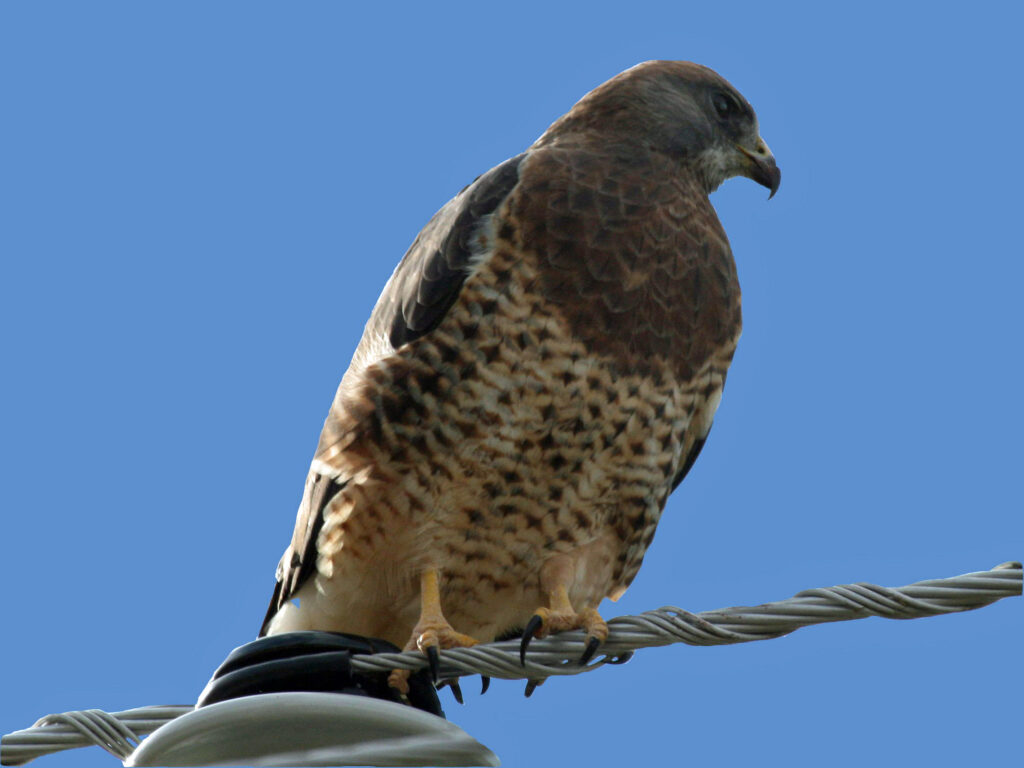
During the spring and summer months, British Columbia is home to the nesting season for the migratory Swainson’s Hawk.
They may be seen in the province between April and September before migrating southward for the wintertime.
The wings and tail of a Swainson’s Hawk are relatively short, and the points of the wings are sharply notched.
They have a lighter belly and red or brown breasts in addition to a brown or grayish-speckled back.
Black flight plumage on the bottom margins and edges of the wings stands out clearly against the white top half of the wing while the bird is in flight (linings).
In the summertime, Swainson’s Hawks may be seen soaring well over the Great Plains and other wide areas of the West.
However, in the fall, they migrate south to spend the wintertime.
In the West, they breed all the way from the Pacific toward the Midwest, including Alaska and British Columbia.
The finest times of year to witness these hawks are last May and October when they migrate from far away and put on magnificent displays involving large birds.
Swainson’s Hawks perch atop power lines or barriers to look down on their prey, the rodents, in the comparatively flat plains where they live.
When perched perches are unavailable, they will forage for insects while on the ground in meadows and farmland.
In locations where Burrowing Owls are plentiful, they may consume them.
Otherwise, they are opportunists who eat just about everything, including mice, lizards, snakes, bats, dragonflies, rabbits, and insects.
Swainson’s Hawks utilize any trees near farmland or low mesquite shrubs and utility poles since there are so few suitable nesting locations in the open land.
The nests may be as broad as two feet and as high as a foot and are made of a jumble of branches and twigs.
Softer materials like dung, bark, wool, and grasses are used to line the interior of the nest.
8. Broad-winged Hawk

Broad-winged Even though hawks aren’t native to British Columbia, there’s been a few confirmed reports in the region in the year (2021).
Neither as little as a crow nor as large as a goose, the Broad-winged Hawk is still a stocky, compact bird.
Their heads appear brown or reddish, their breast is striped, and their short, round tails are striped narrowly.
Following their successful mating season in the eastern United States and Canada, Broad-winged Hawks join a vast kettle migration that heads south towards South America and Central America.
So, the ideal time to observe them is during the autumn migration.
These hawks eat frogs, baby turtles, snakes, and small animals, which they catch when perched on a branch or branch on the side of a water body or forest.
The Broad-winged Hawk may lay 2 to 4 white eggs but will incubate them in an already established nest, most often the nest of a crow or perhaps a squirrel.
9. Red-shouldered Hawk

An accidental species within British Columbia, the Red-shouldered Hawk, was seen nearby Agassiz in the same year, 2022.
The wings of a Red-shouldered Hawk are checked with black and white, while the chest is barred with a rusty red.
Size-wise, they fall in between a swan and a crow, and their tails are highly banded.
They have a very distinctive caack-caack-caack call.
Although Red-shouldered Hawks can be found year-round in the eastern United States, some may go south for the wintertime.
The West Coast is home to these hawks as well.
They often are spotted among damp woodlands, where they may be seen hunting by the side of a stream or pond.
Mice, snakes, and frogs are among their favorite meals.
The same nest will typically be used throughout the year in a broad-leaved tree close to water.
They usually lay between two and five eggs, which may be either white or blue in color.
10. Ferruginous Hawk

As per records, the last sighting of a Ferruginous Hawk in Central Kootenay was in the year 2021, making this species an incidental occurrence in British Columbia.
The Ferruginous Hawk is the biggest hawk in the Americas.
Their heads and wings are disproportionately big.
They have a bright and dark variant, which may display considerable variation in coloration, making certain identification more difficult.
White feathers may be seen on the undersides of the wings, the abdomen, and the head of the more frequent light variant Ferruginous Hawks.
In addition to having darker legs, they also have reddish brown backs and the top sides of their wings.
Brown marking appears more often on the bellies and legs of young light variants.
Dark variants are very uncommon and may be identified by their white flying plumage on the edges of their wings and tail, as well as their brown tummies and undersides.
Aside from the common red-tailed hawk, the vast Western countryside is also home to Ferruginous Hawks.
The southernmost reaches of their breeding range are in southern Canada and the southwestern states of Utah and Nevada.
They travel just very short distances to warmer climates in Mexico and the southern United States during winter.
In the midst of their range, certain birds may spend the whole year as permanent residents.
Ferruginous Hawks are common in the low country’s shrublands and meadows.
Even while migrating, they avoid going via the Rocky Mountains.
Their food consists mostly of small animals, such as ground prairie dogs and squirrels in the East and cottontail and jackrabbits rabbits in the West.
They hunt throughout the day, either in the air or from a nest and also on the grass.
Their nests may be up to three feet in height and width, and then they can hatch up to eight eggs at a time.
Conclusion
In conclusion, British Columbia is home to a diverse array of hawk species, each with their own unique physical and behavioral characteristics.
From the widespread Red-tailed Hawk to the elusive Northern Goshawk, these birds of prey play an important ecological role in maintaining balance and diversity within the province’s ecosystems.
However, habitat loss, fragmentation, and human activities continue to pose threats to their populations, underscoring the importance of conservation efforts to ensure their continued survival.
By learning about these magnificent birds and supporting conservation initiatives, we can help protect these species for future generations to enjoy and appreciate.
FAQ
What is the most common hawk species found in British Columbia?
The Red-tailed Hawk is the most widespread and commonly observed hawk species in British Columbia.
What is the largest hawk species found in British Columbia?
The largest hawk species found in British Columbia is the Ferruginous Hawk, with a wingspan of up to 4.5 feet.
Are there any endangered hawk species in British Columbia?
Yes, the Northern Goshawk and the Sharp-shinned Hawk are both considered species of special concern in British Columbia.
Do hawks migrate through British Columbia?
Yes, some hawk species such as the Swainson’s Hawk and the Rough-legged Hawk migrate through British Columbia in the spring and fall.
Can hawks be found in urban areas of British Columbia?
Yes, some hawk species such as the Cooper’s Hawk and the Red-tailed Hawk can be found in urban areas of British Columbia, especially where there are large trees and open spaces.
Last Updated on April 15, 2023 by Lily Aldrin

